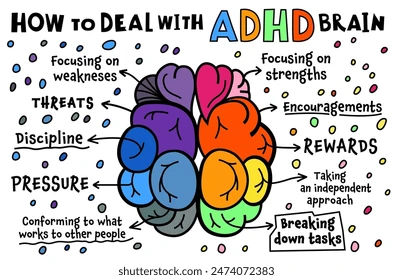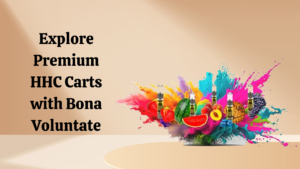
Inattention, hyperactivity, and impulsivity are hallmarks of Attention Deficit Hyperactivity condition (ADHD), a neurodevelopmental condition that impacts children, adolescents, and adults globally. Many people find that drugs such as stimulants and non-stimulants help them manage these symptoms, which improves their ability to concentrate, plan, and carry out everyday tasks. However, both patients and healthcare professionals frequently express worries regarding the possibility of reliance on ADHD drugs, especially stimulants. Anyone using or thinking about taking ADHD medication has to be aware of the dangers, warning signals, and preventative strategies related to reliance.
This page examines the characteristics of ADHD drugs, their potential for dependence, and responsible usage practices.
Types of ADHD Drugs and How They Work
Usually, there are two types of ADHD medications: stimulants and non-stimulants.
Stimulants: The most often recommended treatments for ADHD are stimulants, which include amphetamines (Adderall, Vyvanse) and methylphenidate (Ritalin, Concerta). They function by raising dopamine and norepinephrine levels, which are linked to executive function, motivation, and attention. For many people, stimulants are the first-line treatment for ADHD because of their quick effects, which can be quite beneficial in managing symptoms.
Non-stimulants:
For people who might not react well to stimulants or who have negative side effects, non-stimulants such atomoxetine (Strattera), guanfacine, and clonidine offer an option. These drugs affect distinct neurotransmitters, which frequently results in a less severe impact on behavior and attention. They also have a longer half-life and a lower risk of abuse.
Although both kinds of drugs have advantages and applications, long-term users are concerned about the increased risk of abuse and dependence associated with stimulant pharmaceuticals in particular.
Separating Dependency From Addiction: An Explanation
It’s critical to define two frequently used terms—dependency and addiction—in order to comprehend the possibility of dependence on ADHD drugs.
When the body becomes accustomed to a drug, dependence develops, which can result in withdrawal symptoms if the drug is abruptly withdrawn. Even when a person takes their prescriptions as directed, dependence can still develop; this does not always indicate that they are abusing or misusing the substance.
Contrarily, addiction is the obsessive use of a substance in spite of negative effects. Addiction is linked to a lack of control over substance use and involves psychological desires.
Compared to non-stimulants, stimulant drugs are more likely to cause dependence and addiction. However, the majority of people with ADHD still have a low risk of addiction when using it responsibly and under medical supervision. However, for long-term, safe use, it is crucial to comprehend these hazards.
Why There Is a Greater Chance of Dependency with Stimulant Drugs
Dopamine levels in the brain are raised by stimulants, and this helps control motivation, pleasure, and attention. But because dopamine is also involved in the brain’s reward systems, stimulants may be addictive if taken in excess. The following are some elements that raise the possibility of dependence:
The Function of Dopamine in Reinforcement and Reward:
Dopamine levels are raised by stimulants, which can improve motivation or sensations of pleasure and have a reinforcing impact. Stimulants can cause euphoria if used in excess of recommended dosages or by those who do not have ADHD, which raises the possibility of abuse and dependence.
Effectiveness in the Short Term and Quick Onset:
The effects of stimulants are frequently felt 30 to 60 minutes after intake. Because of their quick onset, stimulants may be more enticing for abuse because their immediate effects can be rewarding, especially for people who want to increase their energy or focus.
Development of Tolerance:
People may grow tolerant to stimulant drugs over time, requiring larger dosages to have the same effect. Although tolerance does not always result in dependency, if people start modifying dosages on their own, it may raise the risk of abuse.
Non-Medical Use:
Some people abuse stimulants by ingesting them without a prescription, frequently in the hopes of improving their performance or cognitive abilities. College students frequently abuse stimulants to remain awake or improve concentration, which increases their chance of developing an addiction.
Recognizing the Dangers and Symptoms of Dependency
Both patients and healthcare professionals should be aware of the dangers and symptoms of ADHD drug dependence. ADHD medication dependence can show up in a number of ways:
Increased Tolerance:
A patient may be showing signs of dependence if they feel the need to increase their dosage without first speaking with a healthcare professional after discovering that their prescription dosage is no longer adequately managing their symptoms.
Withdrawal Signs:
Fatigue, depression, heightened irritability, and trouble concentrating are some of the withdrawal symptoms that can occur when stimulant medicine is abruptly stopped. These indicators indicate that the body has become physically dependent on the drug.
Compulsive Use:
A psychological dependence may be present if a patient has strong cravings or thoughts about the drug and feels incapable of functioning without it.
Misusing Medication:
Using someone else’s prescription, taking larger doses than recommended, or taking medication in an unintended manner (such as smashing pills to inject or inhale) are all behaviors linked to dependence and possible addiction.
Handling ADHD Drugs to Reduce the Risk of Dependency
When prescribing ADHD drugs, medical professionals take the following precautions to reduce the danger of dependence:
Initially Using the Lowest Effective Dose:
Doctors typically begin patients on the lowest effective dose and only raise it if required. This lowers the possibility of negative effects and the potential of tolerance developing.
Frequent observation and follow-up:
Frequent check-ins with medical professionals allow for modifications to be made before reliance occurs by monitoring the efficacy and adverse effects of medicine. Parental participation and contact with instructors can assist in spotting any indications of abuse in children and teenagers.
Drug Holidays:
Usually observed on weekends or during school breaks, a drug holiday is a deliberate, brief cessation of medication. Because the body isn’t exposed to the drug continuously, this method helps avoid tolerance. Drug holidays are frequently utilized with kids, but they can also be employed with adults.
Patient Education:
Patients should be made aware of the dangers of dependence and the significance of taking prescription drugs exactly as directed. Patients can use their medications more responsibly if they are aware of the negative effects of abuse.
Examining Non-Stimulant Alternatives:
Non-stimulant drugs may be a viable option for people who are more susceptible to dependence or who have negative side effects from stimulants. Non-stimulants have a lower risk of dependence and are frequently prescribed for long-term usage, despite the fact that they may not be as effective right away.
The Function of Non-Pharmaceutical and Behavioral Interventions
A thorough treatment approach for ADHD frequently consists of more than just medication. Combining medication with behavioral therapy, lifestyle modifications, and organizational coaching helps a lot of people. By enhancing daily routines and coping abilities, these therapies can lessen the need for medication.
Behavioral Treatment:
Cognitive-behavioral therapy (CBT) and other behavioral therapies teach patients symptom management techniques. Developing productive study or work habits, decreasing impulsivity, and enhancing time management are the main goals of cognitive behavioral therapy.
Diet and Exercise:
Frequent exercise has been demonstrated to raise natural dopamine levels, which enhance focus and lessen symptoms of ADHD. Stabilizing energy levels and lowering hyperactivity can also be achieved with a well-balanced diet high in protein and low in sugar.
Mindfulness and Stress Management:
Mindfulness-based therapies, including meditation, have demonstrated potential in assisting individuals with ADHD medication in reducing stress and enhancing their ability to concentrate. Mindfulness-based stress reduction techniques can enhance life quality and possibly reduce the need for larger doses of medicine.
Conclusion: Using ADHD Medication in a Balanced Way
Although ADHD drugs, particularly stimulants, are good at controlling symptoms, they can cause dependence, especially if taken improperly or without a doctor’s supervision. However,
The majority of people with ADHD have a low risk of addiction when taking medications as directed and under a doctor’s supervision.
Treatment can be maximized while dangers are reduced with a well-rounded strategy that include medication, behavioral therapies, lifestyle modifications, and regular monitoring. Safe and successful ADHD care requires educating patients about the significance of taking medications responsibly, being aware of the possibility of dependence, and supporting a comprehensive treatment plan. People with ADHD can benefit from medication while lowering their risk of dependence if they have close supervision and receive a comprehensive treatment plan.





